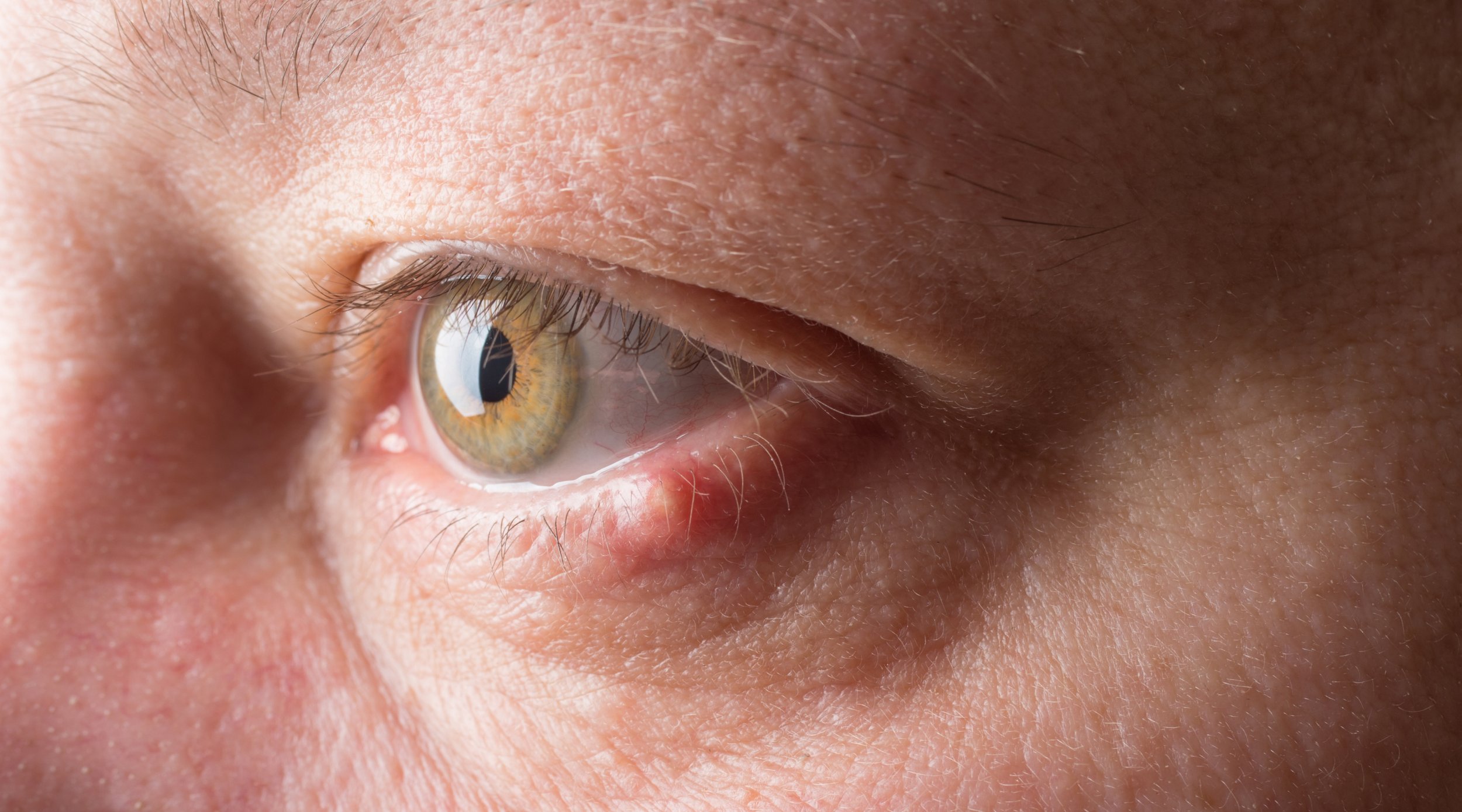STYE & CHALAZION
A stye is a small, red, painful lesion that develops at the base of the eyelashes or on the inside of the eyelids. Most styes are caused by a bacterial infection.
A chalazion is also a lesion that develops in the eyelid. This occurs when one of the glands that secrete the oil layer to the tears is clogged, and it can also originate from an internal stye.

CAUSES & RISK FACTORS
Some individuals are more prone to developing a stye or chalazion than others. Common risk factors include:
Dermatological conditions such as rosacea and seborrheic dermatitis.
History of a stye and chalazion in the past.
Diabetes or other medical problems.
Blepharitis: A condition which affects the edge of the eyelid.
Suffering from blepharitis predisposes to the development of styes as it causes irritation, redness and swelling at the base of the eyelashes.
TYPES OF STYES
01
EXTERNAL
External styes start at the base of the eyelash. Most of these are caused by an infection of the follicle and can look like a pimple.
02
INTERNAL
Internal styes occur on the inside of the eyelid and are caused by an infection of the glands that secrete the oil layer of the tears.
SYMPTOMS
STYE
Pain, redness lesion on the edge of the eyelid at the base of the eyelashes. It may cause swelling of the entire eyelid.
Sometimes a whitehead can form at the center of the lesion.
Grit sensation.
Photophobia.
Secretions at the edge of the eyelid.
Tearing.
CHALAZION
Redness and swelling at the edge of the eyelid, which can be painful.
Eyelid swelling.
Blurry vision if the lesion presses on the eye.
DIAGNOSIS
During your visit to Horta-Santini Eye Care, we will review your medical history to help us identify any underlying condition that may predispose you to the development of styes or chalazions.
We will perform an external eye examination where will focus on the eyelashes, the texture of the palpebral skin and the openings of oily glands at the edge of the eyelids
TREATMENTS
-
Boil a whole egg or cook a potato and put on top the lesion for a period of 30-40 minutes. Massage the lesion with your clean fingers to help drain the lesion.
-
They may be prescribed for infected styes.
-
If the chalazion is swollen, a cortisone injection may be given to decrease the inflammation.
-
If the stye or chalazion does not go away, it can then be drained. Surgery can be done in a medical office and under local anesthesia.
At Horta-Santini Eye Care we know that these lesions can cause both physical and emotional discomfort for the patient. You will be provided with personalized treatment to identify and treat the conditions that led to the formation of the stye and chalazion and thus prevent future recurrences.

